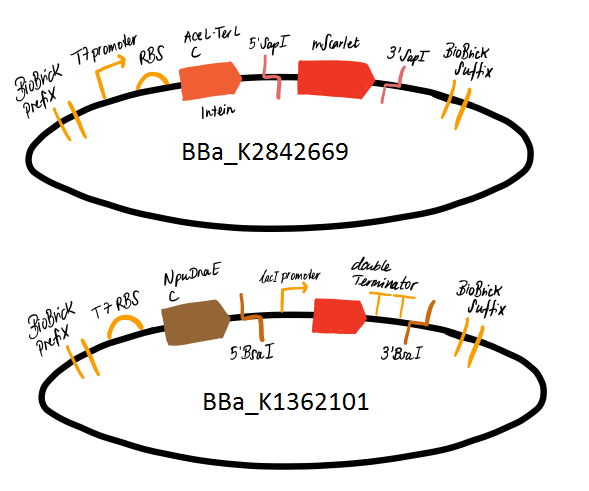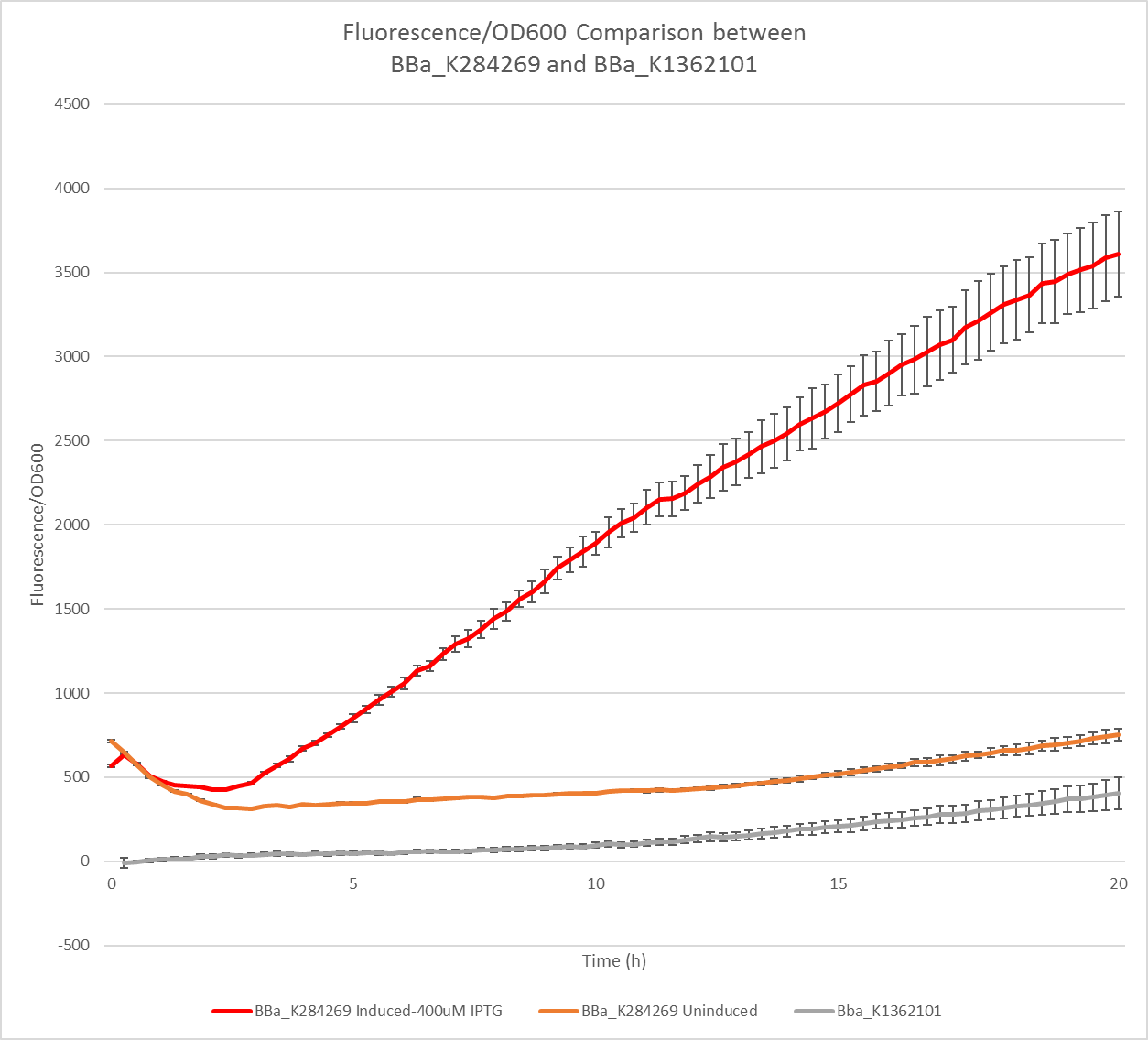Improvement
We have improved the part BBa_K1362101 with our composite part BBa_K2842669. Both parts were designed to allow for the modular design and assembly of intein fusion proteins, but our part has distinct advantages and improvements.

BBa_K2842669 encodes the C terminal AceL-TerL split intein, the mScarlet reporter and a Strep-Tag II for purification. This construct is modular through the use of the SapI restriction sites that have been placed immediately upstream and downstream of the mScarlet reporter. The C terminal AceL-TerL intein allows for ligation of mScarlet to its counterpart through intein trans-splicing. This allows the mScarlet to act both as a reporter for DNA assembly using the modular SapI sites and as a reporter for the activity of its counterparts split intein.
To improve upon BBa_K1362101 we used mScarlet as our reporter instead of mRFP1. Due to protein engineering mScarlet has a higher quantum yeild than mRFP and this contributes to it’s higher brightness[1]. In addition mRFP1 has poor photostability compared to more modern fluorescent proteins[2].
| Quantum Yield | Brightness (103 M-1 cm-1) | |
|---|---|---|
| mScarlet | 0.70 | 711 |
| mRFP | 0.253 | 11 |
Our reporter is driven by a T7 promoter instead of a Lac promoter and uses a RBS that has been optimised by the Salis lab RBS calculator for high expression. We also included a Lac operator, which is not included in BBa_K1362101. This can be used to reduce leaky expression from the promoter, in the instance that the fusion protein is toxic to the cell. The SapI restriction sites have 3bp overhangs that simplify the design of new fusion proteins as the overhang is maintained in frame.
Our construct also has a dual function as both an assembly construct and reporter for building new inteins and as an intein fusion by itself. Due to this, it can be used for both to test intein functionality in other constructs and to build new ones.
Experimental Data
Our reporter protein mScarlet has an 11-fold increase in fluorescence/OD600 compared to BBa_K1362101 when driven by the expression from the T7 promoter (Fig1). It also has a higher fluorescence when uninduced due to the leaky expression from the T7 promoter, this allows it to function as a reporter on Agar plates in the absence of IPTG.

Bibliography
[1] Bindels DS, Haarbosch L, van Weeren L, Postma M, Wieser KE, Mastop M, et al. mScarlet: a bright monomeric red fluorescent protein for cellular imaging. Nature Methods. 2017;14(1):53-6.
[2] Shaner NC, Campbell RE, Steinbach PA, Giepmans BN, Palmer AE, Tsien RY. Nat Biotechnol. Improved monomeric red, orange and yellow fluorescent proteins derived from Discosoma sp. red fluorescent protein. 2004 Dec;22(12):1567-72. Epub 2004 Nov 21.
[3] Robert E. Campbell, Oded Tour, Amy E. Palmer, Paul A. Steinbach, Geoffrey S. Baird, David A. Zacharias, Roger Y. Tsien, A monomeric red fluorescent protein Proceedings of the National Academy of Sciences Jun 2002, 99 (12) 7877-7882




